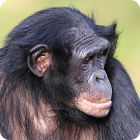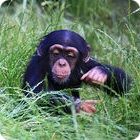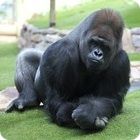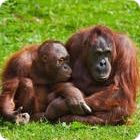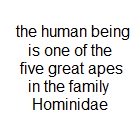Great apes facts

The zoological family Hominidae was once occupied by human beings alone, but the modern classification places all five great apes (including us), in this same family.
Then there are two sub-families, with the most distantly related orangutan alone in the sub-family Ponginae, and the more closely related chimpanzee, bonobo, gorilla and human being in the sub-family Homininae.
All five species have evolved separately for millions of years. In fact, the most recent common ancestor of human beings and chimps (our closest living relative), probably existed over 7 million years ago.
Common ancestors for the orangutan and gorilla would be perhaps another 2 million years removed. These would most likely be small, tree-dwelling creatures more reminiscent of a squirrel than a great ape.
Although whales and elephants are brilliant creatures, the intelligence of the great apes as a family is unparalleled because of the ringer in the room. When estimates of brain function are considered based on the cerebral cortex, and the ratio of neuronal cells and non-neuronal cells present, the incredible human brain is significantly larger than its closest competition.
In general it is the absolute number of brain neurons, regardless of brain size, which is the best indicator of the type of cognitive ability that we human beings recognize as "intelligence".
The orangutan, chimp and gorilla have about 6 billion, 5 billion, and 4 billion respectively, the killer whale and the elephant are both at about 11 billion neurons each, but the great ape in the necktie with the skyscraper in the background has a ratio almost two times greater than the next smartest creatures on Earth - over 20 billion neurons.
did humans evolve from apes?
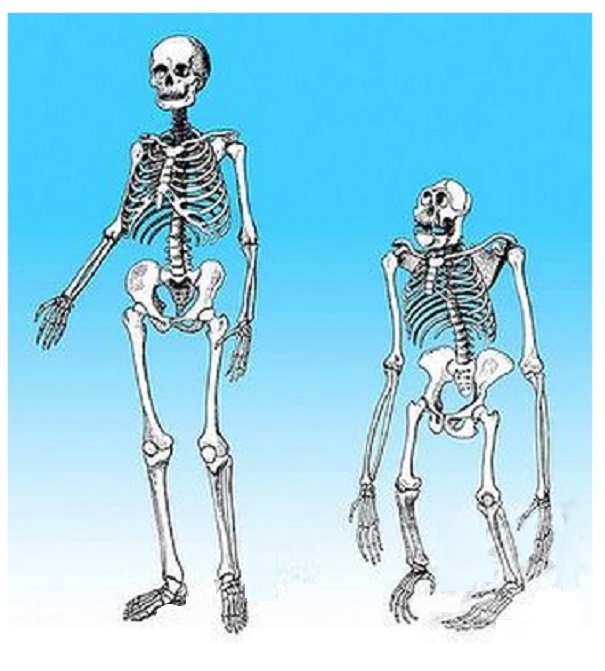
Human beings did not evolve from apes or chimpanzees. In fact, modern chimps and gorillas do not appear in the fossil records until much more recently than homo sapiens, and each of the great ape species, except the bonobo and the chimp who only recently separated about 1 million years ago, developed for millions of years after parting with each other on the evolutionary family tree.
Although this is a matter of great debate, the ancestors of human beings were probably tiny, arboreal, sub-primates, that most likely developed their unique, bi-pedal locomotion not on the ground, but while still living in the trees.
We see activity similar to this with most apes and monkeys - particularly the orangutan- standing on a limb and walking bi-pedally while holding on to branches.
Eventually different forces combined and these small monkey-like creatures, able to support themselves on two legs in the trees, began to move about on the ground.
From them, the famous fossil known as Lucy emerged, the oldest recognized upright walking hominid, and after that a string of ancestors leading directly to modern humans.
None of these bi-pedal apes survive today. The human being, who probably co-existed with ancestors like the Neanderthal, is the last survivor of this line of creatures.
Although all the great apes are capable of walking upright, particularly the fascinating bonobo, it is the primary means of locomotion only for the human being.
We know that the evolutionary history of the human has included upright walking for over 3 million years, and the clues are obvious and simple. The skeleton reveals the evidence bone by bone.
First the femur. In human beings and their upright-walking ancestors, the head of the femur sits in the hip socket at a degree that angles it not straight to the ground, as we see with the other great apes, but slightly inward. This angle puts the knees closer together and allows for true bipedal motion, one-foot in front of the other, in a path that is narrower than the width of the shoulders. True balance.
The true bi-pedal skeleton does not need to rock from side to side to move its limbs. The long, straight leg bones stride forward effortlessly, the sole of the foot is arched up from the ground to provide shock absorption, the big toe is no longer an opposable grasping appendage, but is in line with the other toes, providing stability and propulsion of gait.
Then the hand. The ancestors of the chimp, bonobo and gorilla were, as they still are, knuckle walkers, evidenced most simply by the presence of extended bone ridges above the large knuckles and the wrists that supports those joints as they support the body, and prevent hyper extension or dislocation. In the case of the gorilla, the bones of the wrist are stacked together in a way that locks them in place as the heavy gorilla applies weight.
Human beings have none of these features.
Orangutans don't have them either, because they are not knuckle-walkers, nor are they truly bi-pedal, because they have basically never left the trees. The orangutan has limbs built for climbing, and when it does move to the ground it walks on the palms, or the sides of the hands, not usually on the knuckles.- Great Apes Facts
The orangutan
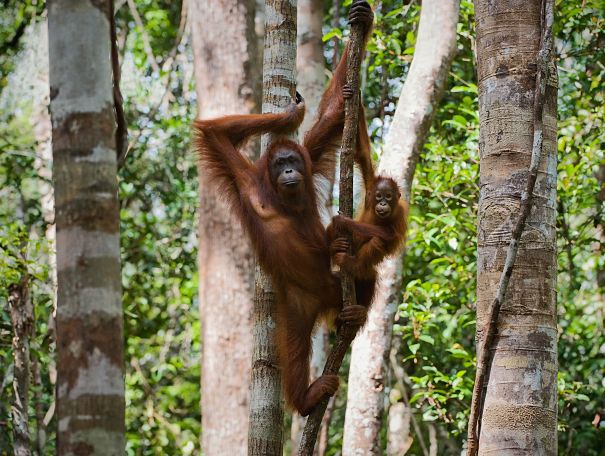
The largest arboreal creature in the world, the orangutan has probably never lived anywhere else but the trees.
Wildly mobile shoulder, knee and hip joints create a climbing machine that spends approximately 90% of its life high above ground. The thick forests of Borneo and Sumatra provide the perfect environment for this soulful, fruit-eating ape.
The orangutan developed quite separately from human beings, but shares some rare features with us that peak the interest.
Orangutans live in a relatively peaceful society without allot of the struggle for sexual dominance that formulate the motivations of many other mammals. They have somewhat of an open sexual policy, very little inter-species violence or conflict, and in a bit of a stunner, actually have intercourse face to face more often percentage-wise than any other creature on land besides the human being.
Even the sexually free-spirited bonobo does not engage in face-to-face relations as often as the oddly sincere orangutan.
The Gorilla
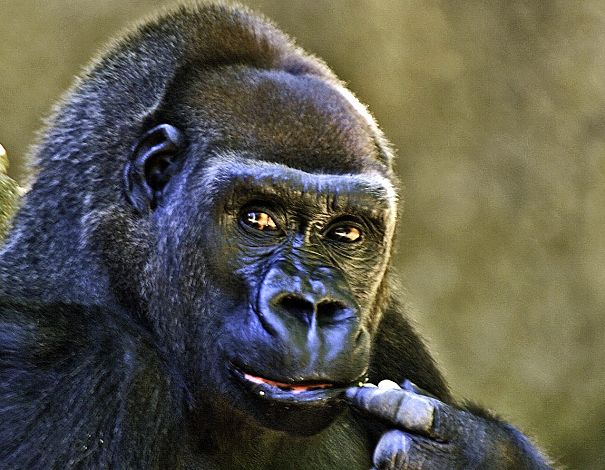
Differing drastically from the orangutan, the massive gorilla spends about 90% of its life on the ground. Juveniles and smaller females make nests in trees for overnight, but the majority of large males, and even entire troops if the conditions are right, make beds in the brush and spend little, if any, time in anything but the lowest, most substantial branches.
Gorillas are true knuckle walkers and spend the most time of the great apes on all-fours. Gorillas are also almost exclusively vegetarian and devote the majority of their day to foraging for fruit, leaves, roots and flowers.
Despite their size and power, they are relatively peaceful creatures. Conflict is not a major part of their lifestyle and troops are generally formed as youngsters leave their birth families and form new groups.
While the social unit is usually one mature male and several females with offspring of various ages, subordinate males are often accepted into the mix as well, and most disagreements are decided with displays or shouting rather than violence.
They are profoundly intelligent and have been known to show compassion and empathy towards each other, and other species as well..
A particularly compelling example of gorilla soul was displayed in 2009 by a female gorilla named Binti, who was alarmed to find a three year old human child had fallen into her zoo enclosure.
She immediately took charge of the situation within her troop and kept the other gorillas away as she contemplated what to do. She displayed concern and anxiety as the crowd of people above her shouted and wailed, but she remained calm, and stunningly took the risk of gathering the child and delivering him, with great care, to the door of her enclosure where she knew he would be helped by her waiting handlers.
Binti had never lived in the wild. She was an orphan who had been raised in the zoo by humans, and was specifically taught childcare by her human keepers, who used dolls to instruct her on how she should safely handle her own infant.
The techniques she used to lift and carry the unconscious human child, were the same that she used to care for her own children.
The little boy who had hurt his head in the fall, was treated quickly and recovered fully, thanks to a caring fellow great ape.

the bonobo - sex as a weapon...
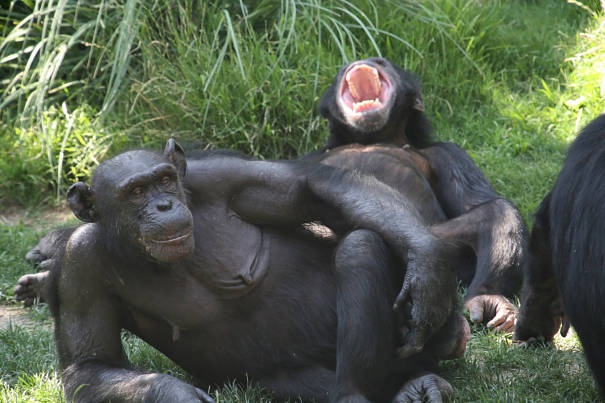
Until the late 1920's the bonobo was not considered a separate species from the chimpanzee. When the species were finally separated based on skeletal differences, the bonobo was given the name "pygmy chimpanzee", which feels inaccurate not only in that they are not just a smaller version of the chimp, but a vastly different animal behaviorally, and also in that the size difference between the two species is overlapping, and not significant enough to warrant the term "pygmy".
The word "bonobo" is probably a misspelling of the village Bolobo on the Conga river, and is also a curious choice for a name since the significance of the village is debatable.
Beyond the name however, the bonobo is a creature whose true nature was deliberately hidden from the general public for decades because it was not only rather racy, but confused the scientists as well.
The bonobo is an exceptionally sexual creature - probably more so than any animal on Earth. Their entire social structure from childhood to death involves playful, enjoyable, mutual and constant sexual interaction.
Bonobos engage in orgies, homosexuality, and masturbation, not necessarily in that order and certainly not to the exclusion of any one activity. It is exceedingly casual, comforting and pleasurable. The level of sexual interaction between youngsters is positively amazing.
Many people in Religious and scientific circles have erroneously contended that human beings are alone in the pursuit of sexual activity purely for pleasure, and although many animals, (and birds) engage in what appears to be recreational sex, the bonobo snuffs that myth with abandon.
Lastly, the bonobo engages in face to face intercourse on a more regular basis than any other land animal other than human beings. Even the location of the female genitalia is more forward facing than in the chimpanzee, who basically never enjoys face to face copulation.
The orangutan does often copulate in this manner, but much less on a recreational scale.
What makes all this activity even more sensational is the lack of violence in bonobo society. The amazing bonobo would literally rather make love than war, and when conflicts do occur, the combatants - no matter what gender they may be- are more likely to end it with a bout of mutual masturbation and a doze in the sun than any manner of violence. - Amazing Great Apes Facts
the chimpanzee
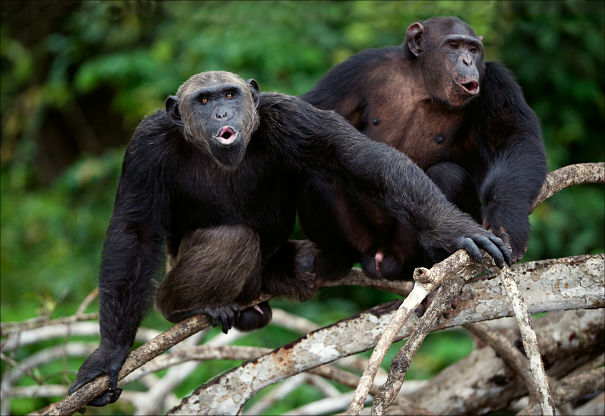
Our closest living relative, the chimpanzee shares approx. 98.4% of our DNA. What does that mean? Our closest ancestors are all extinct, and the path we took to get here is no longer represented on this planet.
There is no other creature that walks like us or talks like us, and a DNA profile, no matter how close, is still so incredibly far.
Human beings have evolved under completely different circumstances from chimpanzees and enjoy cultural accumulation and a transmission of that culture from generation to generation which is unparalleled by any other animal.
Chimps are not on their way to becoming humans. Several important things that happened to us millions of years ago bypassed the chimp and all the other great apes.
Our bi-pedal locomotion, which emerged in our ancestors 3 million years ago, is paramount, yes. But at some point, we learned about fire, and fire changed everything.
Fossil records show that our amazingly successful ancestor, Homo erectus, began using and maintaining fires about 1.5 million years ago, It is hard to imagine, as amazingly smart as chimpanzees are, any situation under which they could not just understand the creation and use of fire (if for instance we attempted to demonstrate it) but possess the ability to conceptualize the techniques required to master it on their own.
Our ancestors, even millions of years ago, somehow, had far greater cognitive ability than the modern chimpanzee. Yet when we look at the animal kingdom, modern chimpanzee society is the only one that is very much like our own.
Male dominated and alarmingly violent, chimpanzees are the only animals other than ourselves who regularly engage in organized, deliberate and stealthy warfare, and most frighteningly, the gratuitous mutilation of their victims. Yet they are brilliantly creative problem solvers and tool-makers, with definitive cultural differences from troop to troop that are taught to the young and handed down through generations.
Often kind, loyal, loving and empathetic, the chimpanzee is indeed our closest kin, in more ways than mere DNA can ever suggest.
a few more great apes facts

- The "great apes" are the bonobo, the chimpanzee, the gorilla, the orangutan, and the human being
- The chimpanzee is our closest relative
- Bonobos were originally known as "pygmy chimpanzees"
- The orangutan is the largest arboreal animal, weighing about 150 pounds and spending 90% of its life in the trees
- The gorilla is the largest primate, and the largest great ape
- All of the great apes have opposable big toes except human beings
- The human being is the only completely bi-pedal animal, and never uses other appendages such as hands or tail to assist in locomotion or support.
- The great apes split from their common ancestor over 7 million years ago
- Chimps are more closely related to human beings than to gorillas
- The orangutan is the only non-human great ape to exist outside of Africa
- The mountain gorilla was not discovered until the early 20th century.
- The mastery of fire was one of the most important steps in the development of the modern human being.
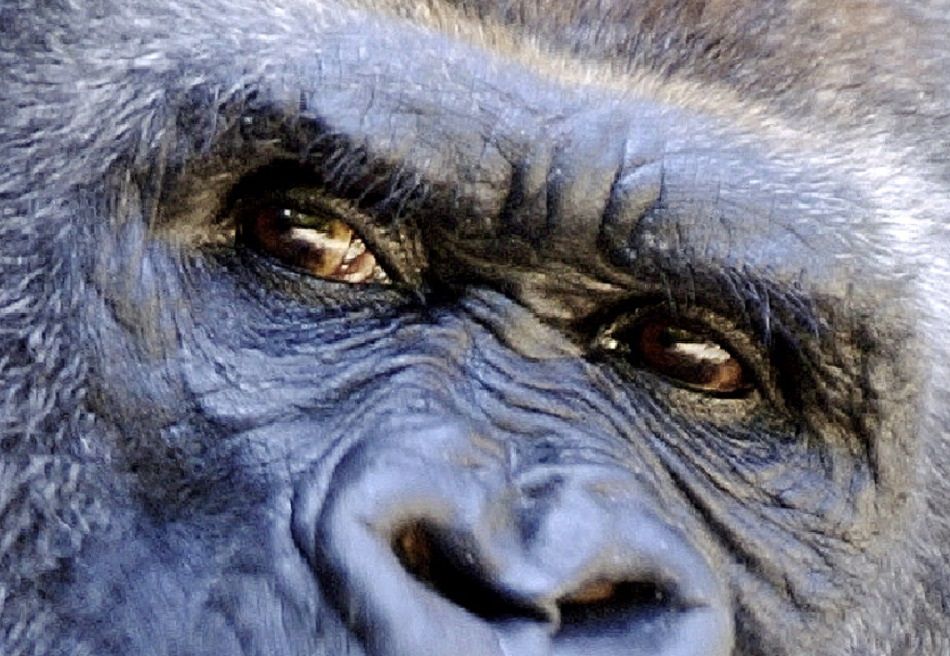
Recent Articles
-
African Animals - Animal Facts Encyclopedia
Oct 11, 16 10:27 PM
African Animals facts photos and videos..Africa is a wonderland for animal lovers, and a schoolroom for anyone who wants to learn about nature, beauty and the rhythm of life -
Baboon Facts - Animal Facts Encyclopedia
Oct 11, 16 10:26 PM
Baboon facts, photos, videos and information - Baboons are very distinctive looking monkeys with long, dog-like snouts and close set eyes. -
Great Apes Facts - Animal Facts Encyclopedia
Oct 11, 16 10:25 PM
Great apes facts, photos and videos..Human beings did not evolve from chimpanzees, modern chimps and gorillas do not appear in the fossil records until much more recently than homo sapiens..
